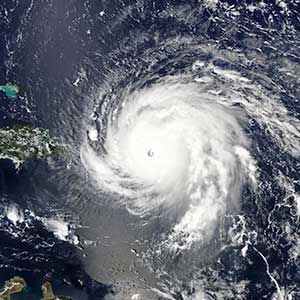Are You Prepared for the 2021 Hurricane Season?
Managing Uncertainty and Variability
Forecasts for the upcoming 2021 season are indicating that El Niño conditions—which tend to increase vertical wind shear and suppress tropical storm activity—are unlikely to develop by the height of the season, meaning that another active season may be coming. What will actually happen, however, is anyone’s guess. Even if basinwide activity is again high in 2021, there is no strong correlation between how many hurricanes are generated in the Atlantic and how many will make landfall, or what the losses will be. High year-to-year variability means that risk managers need a stable, long-term view of potential wind, precipitation, and storm surge losses.
A Unified View of Flood Risk
In a warming climate, storms are likely to become slower and wetter. Indeed, flood damage dominated the impact from exceptionally destructive recent hurricanes like Harvey and Florence. The AIR hurricane and inland flood models for the U.S. can be used together to capture a unified view of flood risk from all sources across the contiguous United States, including tropical and non-tropical precipitation on and off the floodplains and coastal storm surge. This allows you to manage U.S. flood risk for all lines of business and enhance your risk management and resilience strategies with our models.




